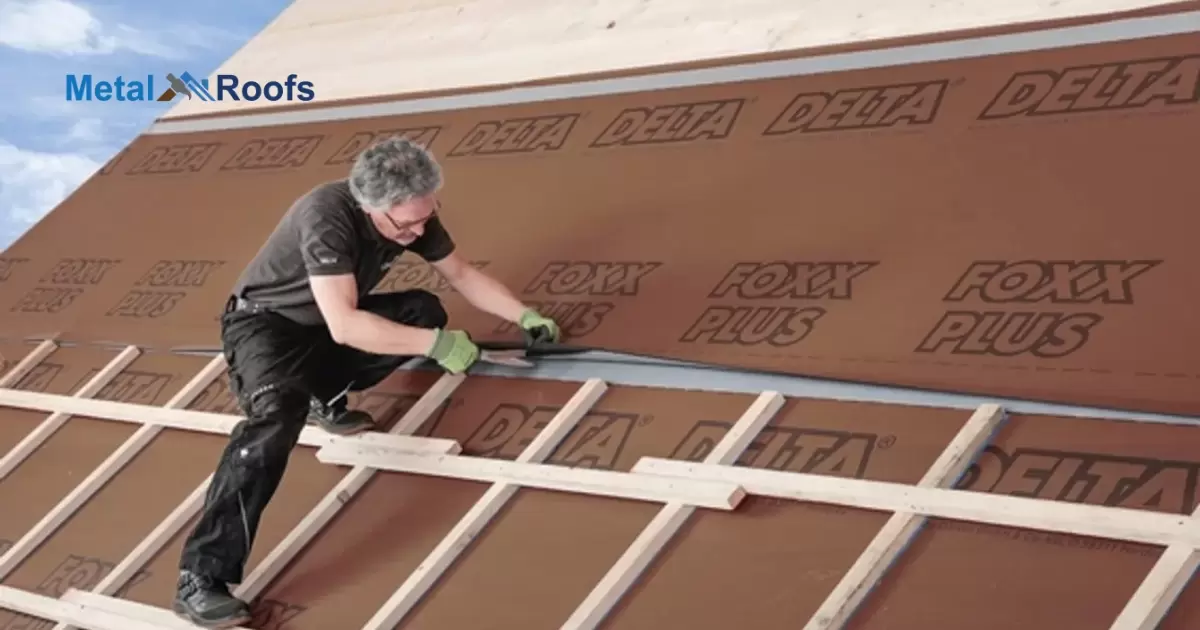Ice and water shield is a membrane laid under metal roofing to prevent water leakage. It sticks to the roof deck and seals around nails, resisting water penetration caused by ice dams or wind-driven rain that gets under shingles.
Metal roofs shed water well. But ice dams and wind-driven rain happen. Leaks follow. Protect your home. Do you need ice and water shield under metal roofing? This barrier sticks to the roof. It seals nails and resists water. Safe from leaks.
You likely need the shield. While metal roofing repels water, it still allows leaks. Ice dams block drainage. Wind drives rain under shingles. An ice and water barrier seals the deck, repairs flat garage roofs. It sticks around nails and flashings. Seals cracks. Prevents costly damage.
Key Takeaway
- Seals leaks from ice dams and wind-blown rain
- Creates waterproof barrier protecting roof deck
- Prevents costly interior damage from leaks
- Recommended for cold winter climates
- Follow manufacturer guidelines for proper install
Purpose Of Using Ice And Water Shield Under Metal Roofing
Ice and water shield is crucial under metal roofing. It prevents leaks caused by ice dams. Ice dams form when snow melts and refreezes, leading to water seeping under the roof. The shield acts as a barrier, stopping water from infiltrating the roof. It’s especially vital in regions with cold winters.
The shield protects against wind-driven rain. This type of rain can find its way into small crevices and cause damage over time. The shield blocks its entry, ensuring the roof remains watertight. Overall, using ice and water shield under metal roofing enhances durability and guards against weather-related issues, prolonging the roof’s lifespan.
Benefits Of Using Ice And Water Shield Under Metal Roofing
| Benefits | Description |
| Prevents water infiltration and leaks | Ice and water shield acts as an additional barrier, protecting against moisture penetration and potential leaks. |
| Increases roof lifespan | By providing extra protection against water damage, the ice and water shield can help extend the lifespan of the metal roofing system. |
Using ice and water shield under metal roofing offers several benefits.
Waterproofing: Ice and water shield acts as an additional layer of waterproofing protection, especially in areas prone to heavy rainfall or snow accumulation. It helps prevent water infiltration, which can lead to damage to the roof deck, insulation, and interior of the building.
Prevents Ice Dams: In colder climates, ice dams can form on roofs, especially at the eaves, which can cause water backup and leakage into the attic or interior spaces. Ice and water shield helps to prevent ice dams by creating a barrier that stops water from seeping through vulnerable areas.
Seals Penetrations: Ice and water shield adheres tightly to the roof deck and around penetrations such as vents, chimneys, and skylights, creating a watertight seal. This reduces the risk of leaks at these critical points.
Flexible and Self-Sealing: Ice and water shield is typically made of a rubberized asphalt material that remains flexible even in cold temperatures. This flexibility allows it to conform to the contours of the roof and self-seal around nails or other fasteners, providing added protection against leaks.
Longevity: When installed correctly, ice and water shield can extend the lifespan of the roof by preventing water damage and deterioration of the underlying materials. This can result in fewer repairs and maintenance costs over time.
Added Insulation: Some ice and water shield products offer thermal insulation properties, which can help improve the energy efficiency of the building by reducing heat loss through the roof.
Insurance Benefits: In some regions, installing ice and water shield may qualify for insurance discounts or incentives because it enhances the roof’s resistance to damage from severe weather events.
Overall, using ice and water shield under metal roofing provides an extra layer of protection against water infiltration, ice dams, and other weather-related issues, ultimately contributing to the durability and longevity of the roof system.
Installation Process Of Ice And Water
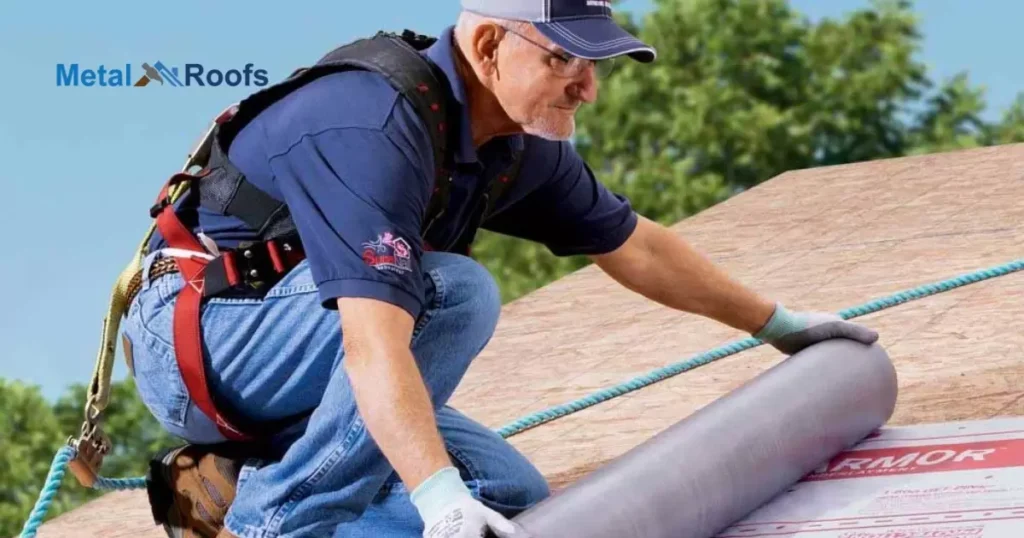
Installing ice and water shield under metal roofing is crucial for protection against leaks and ice dams. Begin by cleaning the roof thoroughly, removing any debris or dirt. Next, unroll the ice and water shield along the eaves of the roof, ensuring it overlaps the edge by a few inches.
Press it firmly into place to create a tight seal. Continue this process up the roof, overlapping each row slightly to prevent water from seeping through.
Once the shield is in place, install the metal roofing panels on top, securing them tightly to prevent any gaps or openings. Finally, inspect the entire installation to ensure everything is properly sealed and secured, providing reliable protection against water damage.
Cost Considerations For Ice
When installing metal roofing, considering costs for ice and water shield is crucial. Ice and water shield is a protective layer that prevents water infiltration. It’s vital in regions prone to ice dams and heavy rainfall. The cost of ice and water shield varies depending on factors like brand, quality, and quantity needed.
Investing in high-quality ice and water shield upfront can save money in the long run. Cheaper options might seem tempting, but they may not offer adequate protection. Proper installation is also key to ensure the shield functions effectively. Carefully evaluating costs and choosing a reliable product, you can safeguard your metal roofing investment and avoid costly repairs down the line.
Effectiveness Of Water Shield Under Metal Roofing
Ice and water shield is highly effective under metal roofing. It provides a strong barrier against moisture. This shield prevents water from seeping into your home. Metal roofing can sometimes develop leaks, but this shield acts as an extra layer of protection.
Installing ice and water shield beneath metal roofing is a smart investment. It ensures your home remains dry and secure. This shield adheres tightly to the roof deck, creating a watertight seal. With proper installation, it significantly reduces the risk of water damage. For long-term peace of mind, consider adding ice and water shield beneath your metal roofing.
High Heat Ice
High heat ice and water shield is a vital component in roofing. It provides superior protection against extreme temperatures, preventing leaks and damage. Its durable material ensures long-lasting performance in harsh conditions. This shield acts as a barrier, sealing out water and ice, even in high-temperature environments.
It’s a crucial investment for any roofing project, ensuring peace of mind and security. With its easy installation process, it’s a practical solution for both professionals and DIY enthusiasts. Choose high heat ice and water shield for reliable protection against the elements.
Moisture Barrier Under Metal Roof
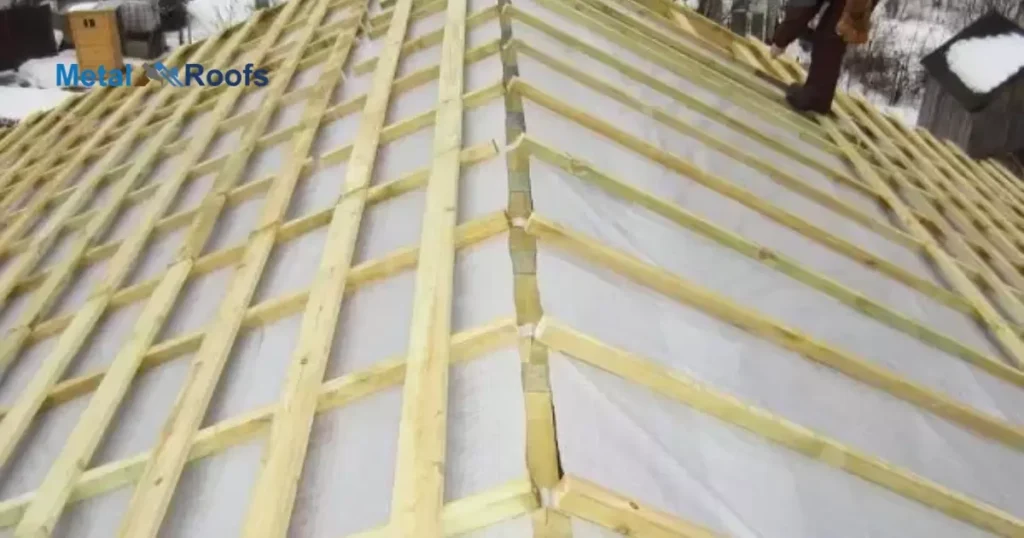
Installing a moisture barrier under a metal roof is crucial. It prevents water from seeping into your home. Without it, leaks can damage ceilings and walls. Moisture barriers are usually made of materials like felt or synthetic fabrics. They create a protective layer between the roof and the interior of your house.
Proper installation ensures maximum effectiveness. It’s a vital step in maintaining the integrity of your roof. Metal roofs are durable but still vulnerable to moisture. That’s why a moisture barrier is essential. It acts as a safeguard against leaks and water damage. Invest in this extra layer of protection for peace of mind. Your home will thank you in the long run.
Grace Water Shield
Grace Ice and Water Shield is a roofing underlayment. It’s crucial for protecting homes from water damage. Installed beneath shingles, it creates a watertight barrier. This shield adheres firmly to the roof deck. It’s flexible and can accommodate various roof shapes. It’s especially useful in areas prone to ice dams.
This product prevents water from seeping into the roof’s structure. It’s durable and provides long-term protection. Grace Ice and Water Shield is a wise investment for safeguarding your home against leaks and costly repairs.
Do I Need Tar Paper Under Metal Roof?
If you’re installing a metal roof, you might wonder about using tar paper underneath. Tar paper acts as a moisture barrier, protecting your roof deck from water damage. It also provides an extra layer of insulation. It’s not always necessary for metal roofs. It depends on your climate and local building codes.
In regions with heavy rainfall or snow, tar paper can be beneficial to prevent leaks. It adds an extra layer of protection against moisture infiltration. Yet, in drier climates or where building codes don’t require it, you might be able to skip the tar paper.
Where To Put Ice And Water Shield?
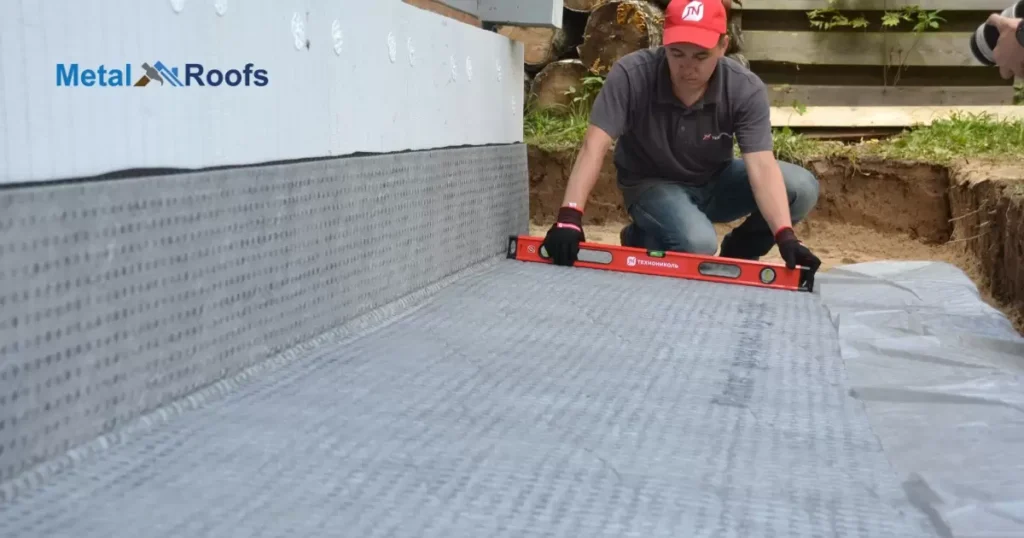
When installing a metal roof, it’s crucial to place ice and water shield along the eaves and in valleys to prevent leaks. Start by applying the shield along the eaves, extending it at least 24 inches past the inner wall.
Ensure it overlaps properly. Install the metal drip edge over the shield for added protection. In valleys, place the shield along the bottom edge, extending it up the valley and overlapping sections.
Secure it tightly to the roof deck to create a watertight seal. To trim excess shield carefully to avoid gaps or exposed areas. Properly installed ice and water shield provides essential protection against water infiltration, preserving the integrity of your metal roof for years to come.
underlayment for low slope metal roof
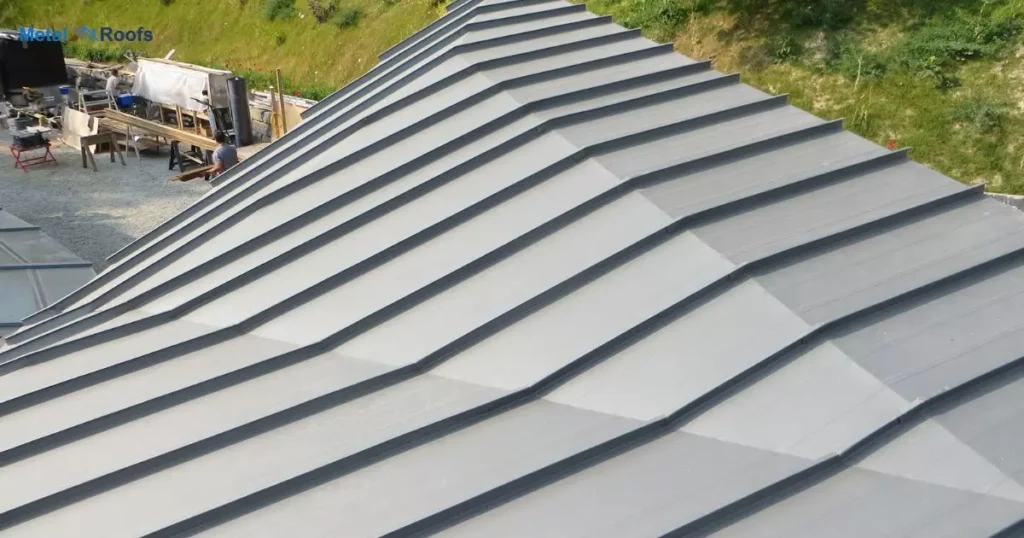
For low slope metal roofs, synthetic underlayment and self-adhering membranes are excellent choices. Synthetic options are durable and resistant to tearing, while self-adhering membranes provide superior waterproofing for slopes of 2:12 or less.
Other options like asphalt-saturated felt and modified bitumen offer economical and enhanced waterproofing solutions. Consider climate, slope, and budget when selecting the best underlayment for your roof.
Frequently Asked Questions
What do you put down under metal roofing?
Under metal roofing, you typically lay down an underlayment to provide a barrier against moisture. This could be synthetic material or felt paper. You may use insulation to regulate temperature and reduce noise.
Do metal roofs need ice guards?
Metal roofs need ice guards to prevent ice dams. These guards stop ice from forming at the roof edges, preventing potential damage. They ensure safe drainage and protect against leaks.
Should you put a moisture barrier under metal roof?
Yes, you should. Moisture barriers prevent water damage. Metal roofs can trap moisture without one. Prevent leaks by using a moisture barrier.
Conclusion
An ice and water shield boosts the weather protection of a metal roof. Metal sheds precipitation. But it is not impenetrable. Ice dams can impede drainage. Wind-driven rain sneaks under metal roofing. Even quality installation misses spots. The barrier seals the deck and nails.
Install ice shield over the entire deck before metal roofing. Follow manufacturer guidelines carefully. Smooth out all wrinkles and bubbles. Seal around roof protrusions thoroughly. Overlap seams correctly. A well-installed barrier saves money over time.
